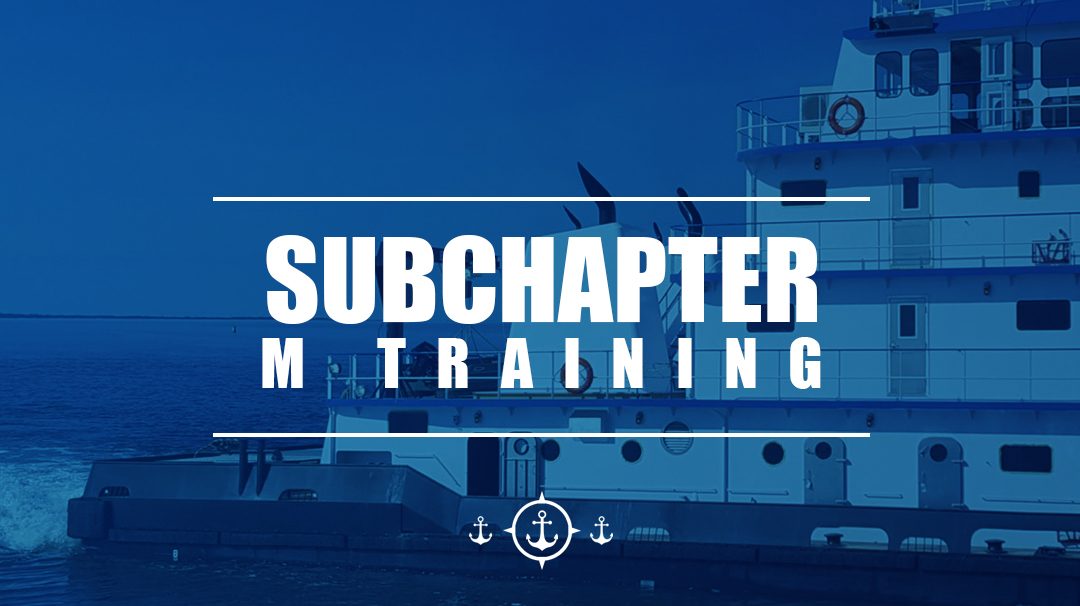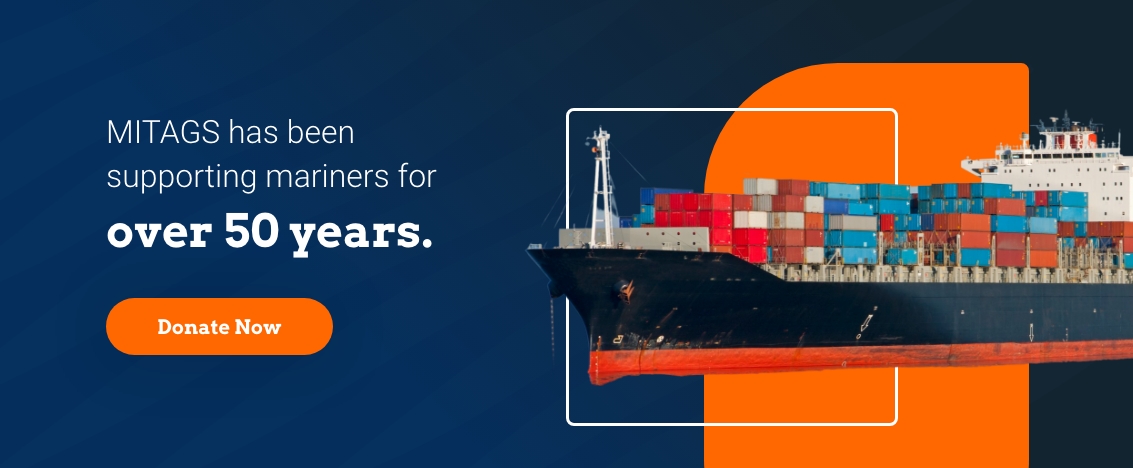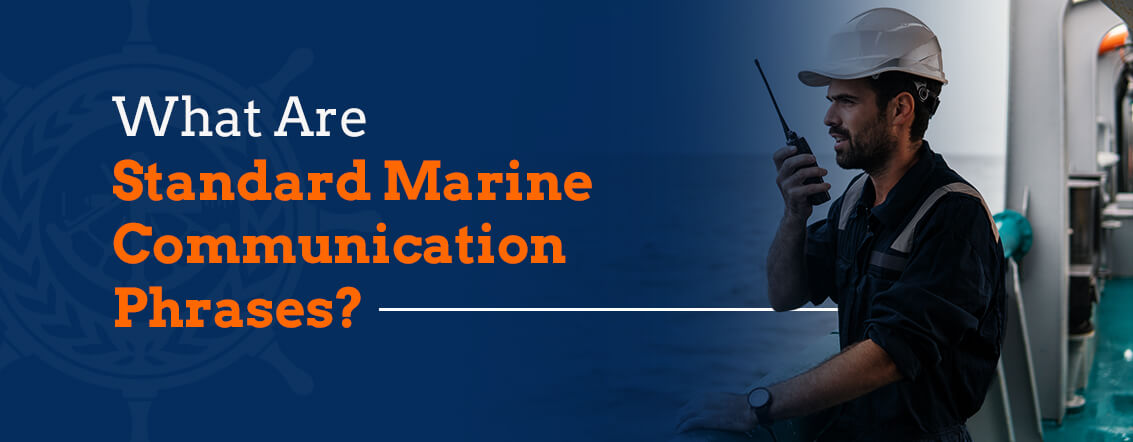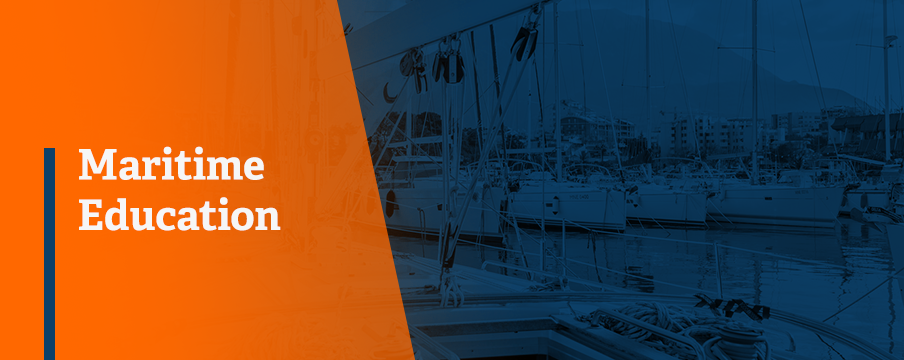What is Subchapter M?
Subchapter M is a relatively new set of U.S. Coast Guard training and inspection regulations for tugboat and towboat companies. Released in 2016, it builds on the industry safeguards already in place and establishes new training protocol and vessel compliances based on qualitative risk assessment and risk management standards. The American Waterways Operators or AWO — a national advocate for the U.S. tugboat, towboat and barge industries — is working in conjunction with the U.S. Coast Guard to ensure a smooth transition into Subchapter M for current workboats.
The Coast Guard has been working on Subchapter M for over a decade and hopes to seamlessly impose the new, stricter regulations without slowing down one of the maritime industry’s most important sectors. Over the next four years, the Coast Guard will integrate Subchapter M into vessel audits for Certificates of Inspection.
The Coast Guard reports 1,231 towing incidents in 2016 with varying degrees of severity and more than 32,000 gallons of oil spilled. Because of the inherent dangers to employees that comes with working in the towboat or workboat industry, the primary goal of Subchapter M is to reduce human injuries, environmental impact and asset damage.
Any captain with experience can immediately tell the difference between a well-trained crew and one that isn’t. Most accidents in the maritime industry are the result of human error, and when employees are adequately trained, the chance for mistakes is much lower.
The movement toward better regulation and more responsible captains and crew members is shifting the culture of the marine industry as we know it.
Throughout this article, we’ll cover some of the common concerns and questions you may have about Subchapter M, including:
- What is Subchapter M
- Who Does Subchapter M Affect
- Coast Guard Vs. Third-party Tsms Option
- How to Get Subchapter M Compliance and Training
- What Training is Required Under Subchapter M
- Subchapter M Compliance Date
- Industry and Cultural Shift to Subchapter M
Who Does Subchapter M Affect?
The Coast Guard requires Subchapter M compliance for all U.S. inspected towing vessels, but there are a few exceptions:
- Boats under 26 feet, so long as they’re not moving oil or hazardous cargo
- Assistance towing vessels
- A workboat operating within a work zone
- Tugboats at sea — if less than 300 GR
Coast Guard regulations are federal law, which means they supersede the Occupational Safety and Health Administration — OSHA — and state regulations. Subchapter M dictates everything from vessel construction, design, operation, equipment and repair to crew qualifications.
If your vessel does fall under the Subchapter M requirements, there are two different options for you to become legally certified:
- Coast Guard Inspection — This is the traditional Safety Management System and vessel inspection through the U.S. Coast Guard.
- The Towing Safety Management System — The TSMS allows for third-party organizations to inspect and certify your fleet’s compliance with Coast Guard regulations.
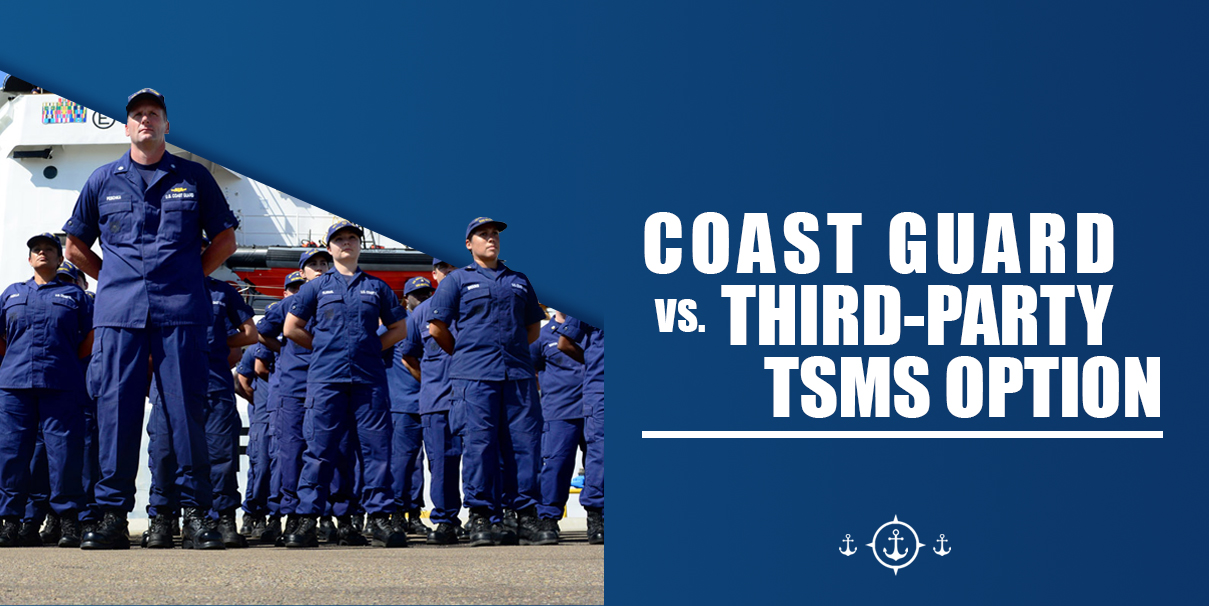
Coast Guard Vs. Third-party Tsms Option
Choosing to become certified through the Coast Guard versus going through a third-party TSMS company comes down to personal preference and the size of your company.
One of the main differences is that if you go through the Coast Guard, your fleet and crew will have to undergo annual inspections to remain certified. Whereas with a third-party TSMS, you only have to be inspected every five years by a certified surveyor like from the Towing Vessel Inspection Bureau — TVIB.
If you’re a small towing company, the difference between the two options may not matter much. But if you’re a large company with more than five vessels, you may not want to deal with high-stakes inspections every year, and exploring third-party options may save you some headache.
Some argue that the TSMS option is superior — it helps you ensure you make the certification deadline, and the U.S. Coast Guard typically takes a long time to complete their inspections.
However, the Coast Guard explicitly says in the Preamble that it is aware of the large number of vessels that need to become certified and is prepared to shift resources as necessary to meet the demands — this estimation was based on companies that have five or fewer vessels.
What does the Coast Guard look for before it gives a Certificate of Inspection under Subchapter M? Almost everything.
The Coast Guard explicitly lists how and where your vessel can operate, including its service, legal travel routes, what it can and can’t do as a workboat, if it can go in fresh or salt water and so on. Make sure to read the new provisions in Subchapter M, as they leave nothing to chance, and missing a small detail could put you in legal jeopardy.
Another important change ushered in by Subchapter M is a new set of vessel definitions that affect how your crew can legally operate. For example — if a crew member uses an electric grill in a different area of the boat to make a meal other than the galley, that space becomes a legal galley and must satisfy all galley-related regulations. Don’t breeze through their updated terms because you’re familiar with common terminology — there are subtle changes that matter and affect your safety plan, so read carefully.
How To Get Subchapter M Compliance And Training
The Coast Guard wants maritime companies to understand that TSMS isn’t mandatory — you have the freedom to choose the option that’s right for your fleet. They released a statement in response to comments about the TSMS — saying that it’s entirely optional and is only required to be maintained after a company elects to use a TSMS plan.
While some argue that a third-party Towing Safety Management System is superior to the Coast Guard certification process, both equally satisfy the requirement under Subchapter M. Be cautious of sales pitches that try to sell you a management system you might not need.
According to the Coast Guard, an estimated 51 percent of towing vessels currently operate under a Safety Management System. Once Subchapter M is in full effect, existing SMS plans will no longer satisfy the requirements for vessel certification. However, this doesn’t mean marine companies need to throw out their original SMS plan entirely and enroll in a third-party management system — they can adapt the existing program so that it meets the new Subchapter M requirements.
No matter which option you choose to become certified, the Coast Guard recommends you take the following actions:
- Create a Health and Safety plan.
- Produce a training manual.
- Inspect your boats and make a complete worklist.
- Establish a standardized record keeping system.
If you opt to use a third-party TSMS, you’ll also need to do the following:
- Analyze the shortcomings of your current SMS and what you’ll need to change to get it Subchapter M-compliant.
- Research and select the third-party company you’ll use for TSMS approval and audits.
- Determine your TSMS survey program — external or internal.
Questions? Contact a School Advisor
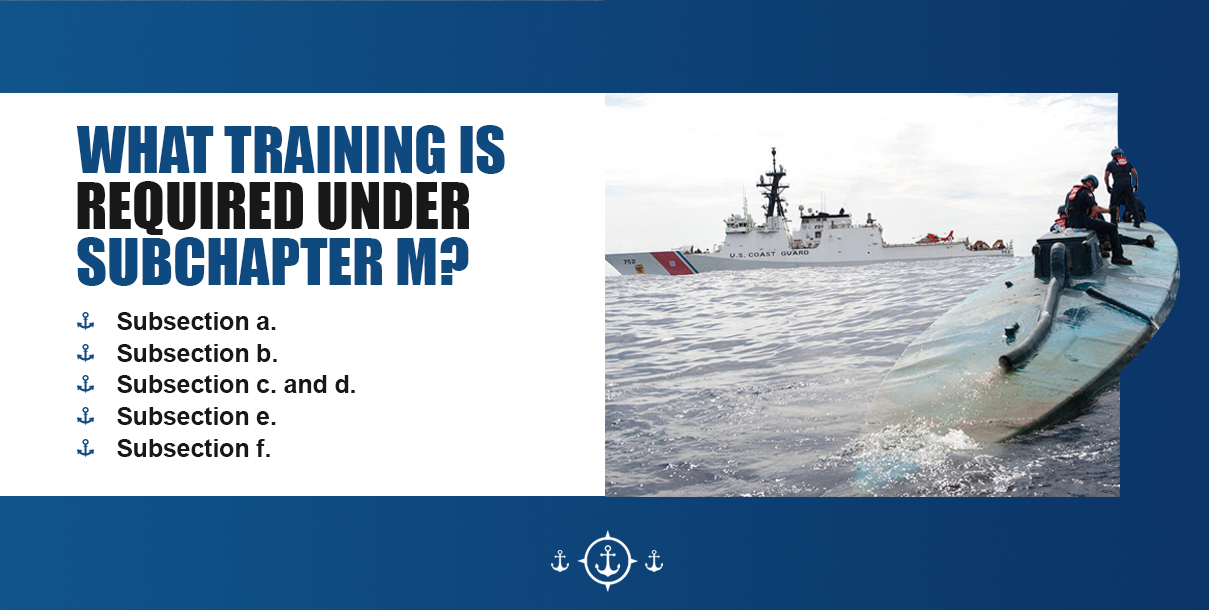
What Training is Required Under Subchapter M?
Subchapter M doesn’t explicitly outline what the training requirements for a lot of its new sections should be, partially because the operations vary so widely. Ideally, the regulations would include training procedures, but instead, they give a general guide for what towing companies need. It also doesn’t express how the Coast Guard will evaluate the training upon inspection.
If you own a tugboat or towing company, you’ll have to update and adapt your training program and your equipment to meet the requirements of Subchapter M. Be prepared to demonstrate your equipment and safety training to a Coast Guard official to prove that you satisfy the requirements for your vessel.
Here are the Sub M training requirements outlined in Section 140:
- Subsection a. — Crew must have a working knowledge of the health and safety plan for the vessel, know how to report unsafe conditions, use personal protective equipment, communicate hazards, etc.
- Subsection b. — Each crew member must have an understanding of the potential hazards related to their function aboard the boat and how to maximize safety.
- Subsection c. and d. — The crew must undergo scheduled and frequent training courses to stay up-to-date and competent.
- Subsection e. — There must be a safety and emergency training procedure for when non-crewmembers board the boat.
- Subsection f. — The master of the vessel a company manager must document training, including who gets trained and when.
Other areas covered in Subchapter M include navigational safety training, watchkeeping and emergency procedures.
It’s imperative for any operator of a vessel or developer of the new Subchapter M-compliant rules to read Section 140 carefully — make a list of items to include in your training procedures.
How you satisfy the Subchapter M requirements is left up to you as the master of a vessel or the manager of your company. While a basic knowledge and demonstration of skills may satisfy the Coast Guard requirement, we recommend developing hands-on safety drills that allow your crew to practice real scenarios. That way, in case of a real emergency, everyone will know the correct procedures. Emergency drill protocol is only useful if your crew can jump into action without hesitation. Work out the kinks beforehand, and rest easy knowing your crew is ready for anything.
Questions? Contact a School Advisor
Subchapter M Compliance Date
Although the Coast Guard released Subchapter M on July 20, 2016, vessels had two years to meet the majority of the requirements — the deadline falling on July 20, 2018. The Coast Guard is trying to work with the tug and towing companies to make for a smooth transition into the new regulations with minimal downtime. The entirety of the law will be phased in over a six-year period.
The next deadline for obtaining a certificate of inspection (COI) is in 2019. By July 22nd, 25 percent of towing and tugboat companies’ vessels must have a COI onboard. The percentage increases by 25 percent each year after until all vessels in the fleet have their COI onboard.
The Coast Guard has allowed a substantial amount of time for the Subchapter M transition, but if you’re one of the many companies that need to implement these regulations on your vessels, don’t procrastinate. Improvements and additions often take much longer than expected, and you don’t want to risk being underprepared when the deadline approaches.
Keep in mind — every Coast Guard inspection must be scheduled at least three months in advance, so be sure to take this into account when trying to hit your compliance deadlines. Fill out the inspection application and be sure to select the compliance option that you have chosen.
If you choose the third-party TSMS option, you must also provide a Towing Safety Management Certificate six months or more before getting your Certificate of Inspection. Although the third party will only need to review your safety plan, the Coast Guard will have to complete an in-person audit as well.
Subchapter M is ushering in a new era for the tugboat and towboat industry. Even if your company has a flawless track record for safety, there are still new regulations and requirements for equipment and training to which you’ll need to adapt.
Industry And Cultural Shift To Subchapter M
Subchapter M is indicative of the cultural change that’s happening in the towing and tugboat industry: an increased level of professionalism and shifting of responsibility from marine companies onto the master of the vessel.
While a shift of responsibility onto the individual in charge of a vessel may add some personal pressure, it also amounts to a higher level of personal responsibility and a more attentive and accountable work atmosphere.
Subchapter M empowers captains to make demands of their company if it means a more safe and compliant operation. In Subchapter M, the rules enable captains to command and manage their inspected vessels in a way that they deem is responsible and safe.
The Preamble offers some insight into how the Coast Guard perceives the authority of the master — a person must be designated as the master of the vessel and can make demands of their company such as extra crew members or equipment when appropriate. This authority granted to captains may come as a small shock to the industry.
The Coast Guard inspection will be mostly between the Coast Guard official and the master of a vessel. If you’re a marine company, make sure your captains know about this responsibility so they can thoroughly prepare for the inspection. You can find insights into the Coast Guard expectations in the Preamble of Subchapter M.
The most difficult challenge for marine towing and tugboat companies may be getting their employees to comply with the new standards after they’ve been operating under different and more relaxed regulations for several years. Consider a way to gradually enforce these rules on your employees and crew to keep them happy.
MITAGS For Subchapter M Training
Learn More About Subchapter M Training with MITAGS
Here at MITAGS, we offer an M-Safe towing vessels course that covers the fundamentals of safety and emergency skills now required by law in Subchapter M. As a towing vessel operator or master — you must be proficient and knowledgeable about the new regulations. This course is perfect for small maritime companies, new employees and those looking to enter the towing industry.
Our experienced staff gives you personalized attention and teaches the material at your pace. We offer a mixture of hands-on and in-class training that gives you the real-world experience you need. You’ll be able to apply what you learn directly to your work.
If you have any questions or would like to speak to one of our staff, please contact us for more information.

